If you just bought a triathlon training plan from me, here is a guide to help you get started.
Getting Started
First, you need an account in TrainingPeaks.
You can get one here: New TrainingPeaks account
To start, I recommend the free version. Then you can find promo codes for 1-3 months of the paid version, if you want. The paid version is not necessary, however.
Then, you will need to load the training plan.
If you have not purchased it yet, head to my TrainingPeaks Coach Profile and buy it. You will make payment to TrainingPeaks.
Then, after you buy it, you’ll have to apply it to your account. You should see a confirmation like this:
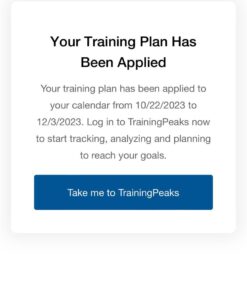
Once your plan has been applied to your profile, you should be able to see the future workouts within TrainingPeaks.
Then, do the workouts.
As you complete each workout and synch your device, they’ll be reflected within TrainingPeaks as being complete (or incomplete or partially complete).
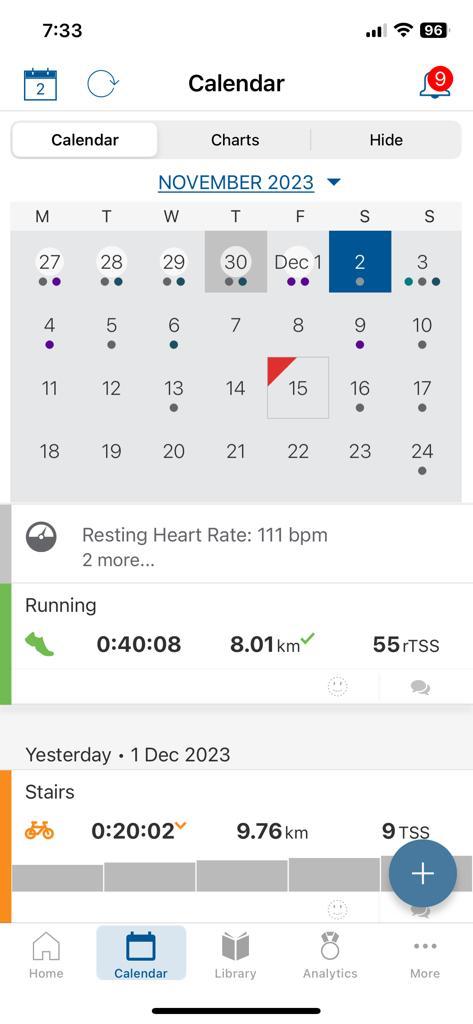
In the image above, you can see that the green workout was completed according to what was prescribed (so it’s green).
The orange workout was only partially done, hence its color.
If you completely miss a workout, it will be red.
Will the workouts transfer to my running watch, bike computer, Zwift, Rouvy, FORM goggles or other devices?
Yes, the structured workouts will. All of my plans include structured workouts, or workouts that specify the pace, power, or exertion you should apply for a given time or distance.
So, when those automatically synch with your device, your device will guide you.
You won’t have to try to memorize the workouts or write them down anywhere, as long as you have synched your devices.
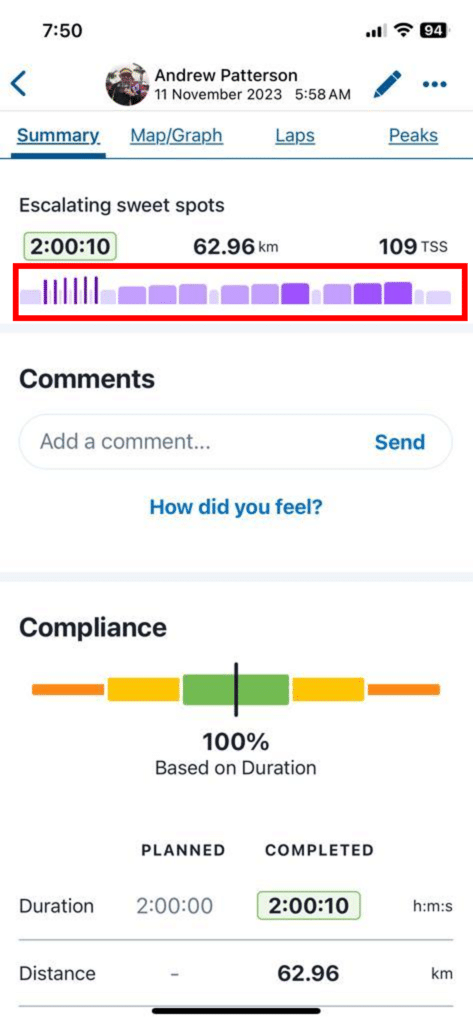
The selection in the red box shows that the workout was built as a structured workout. That went directly into my Zwift account the day before the workout.
Then, Zwift guided me through the workout.
Gamin does the same for all structured workouts for swim, bike, and run.
For swimming, I seriously love how the workouts go directly into my FORM goggles.
Once they’re synched, you just swim, no watch needed, and the workouts appear in your goggle lens, telling you exactly what to do.
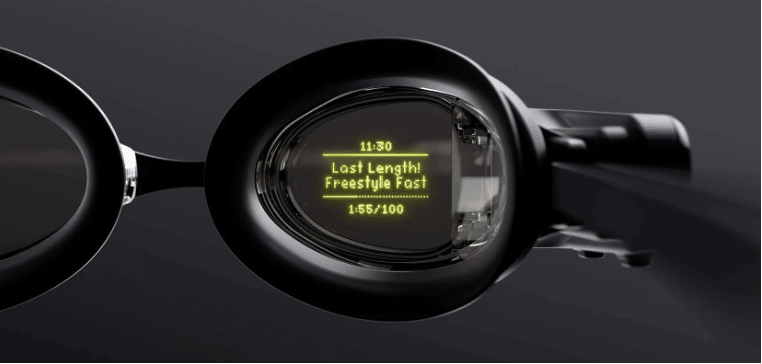
Yes, it really does work as you see above, and it looks this clear while wearing the goggles.
If you’d like to get some, you can check them out on Amazon here.
Here’s the guide from TrainingPeaks on how to connect such devices: Compatible Apps & Devices for Training Peaks | TrainingPeaks
Glossary
Following are some terms you may encounter in the workouts, along with their definitions.
GENERAL
HR – Heart rate
WU – warm up
CD – cool down
SWIM
FC – Front crawl
Mixed – Mixed strokes
Pull – Pull buoy
Buoy – Pull buoy
Fins – Swimming fins, shorter than scuba diving fins
Paddles – For your hands
Snorkel – To avoid the need to turn your head to breathe, the snorkel lets you focus on other parts of your stroke
CSS – This is your fastest pace that you can maintain for long durations. Reference: What is Critical Swim Speed? | Garmin Customer Support
3/5/3 – Breathe every third stroke, then breathe every 5th stroke, then breathe every third stroke
BIKE
FTP – Functional Threshold Power, or the theoretical amount of power you can hold for an hour. It’s calculated as 95% of the power you can hold for 20 minutes. Reference and more info: How to Calculate Threshold Power, Heart Rate, or Pace – TrainingPeaks Help Center
Trainer – A device you put your bike on to convert it to a stationery bike. Many trainers these days are smart trainers, meaning they have built in power meters and resistance modes for more accurate simulations.
Cadence – Cycling cadence is important. The ideal number for most people is around 90 RPM.
Lower cadence requires more muscular power, while higher cadence relies more on cardiovascular effort.
In triathlon, it’s important to not impose undue muscular stress on your legs, as this will come back and bite you on the run.
So, ensure you are at an average of about 90 RPM or more on your rides.
RUN
LT – Lactate Threshold. This is considered the maximum pace you can sustain for long-ish periods, like 30-60 minutes.
Further reading: Lactate threshold: What is it and how can you determine yours? (runnersworld.com) and Lactate threshold and the marathon – Luke Humphrey Running
Cadence – The number of steps you take per minute while running. It’s commonly accepted that 180 is ideal for most people. Most beginner and even intermediate runners have lower cadence.
The fewer steps you take per km or mile, the less impact per step, and the flatter your feet land.
Imagine how landing with big long steps will result in a heel strike, and in a steep leg angle against the ground. That will create a sort of breaking force that will slow you down, in addition to the impact.
Ideal is a cadence of 180 steps per minute, but that is considerably higher than what most people are used to.
If you use a Garmin or other smart watch you should be able to review the cadence of your past runs.
Most Garmins have metronomes that can be set to vibrate and/or beep to guide you on your cadence. Try setting it maybe 10 steps per minute higher than your current cadence, until you manage to comfortably move up to 170 or 180.
Another tip? Try finding music that has 90 or 180 BPM and synch your step with the beat.
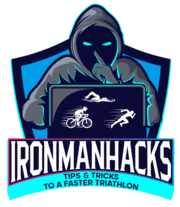
Leave a Reply
You must be logged in to post a comment.